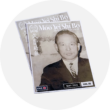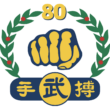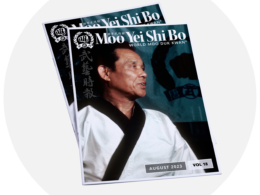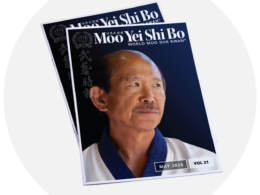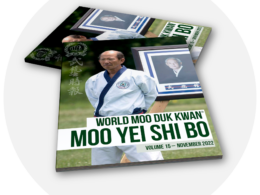The Founder placed history as the first element of the Moo Do values. It is strategically placed to emphasize all past experiences as a path to understanding the present time.
The word for history in Korean is “Yuk Sa” which literally means “experience and record”. There are four components to history worth noting. The first is the event and experience itself; the second is accurately recording these events; the third is learning these events, while the fourth is transferring or teaching this information. Done in this manner, history is preserved for future generations providing wisdom and guidance through the records that teach us of what has come before us. But there is a danger that history may also be “used” as an instrument of deceit, that not only distorts the understanding of the uninformed, but it also disrupts the harmony of collective understanding of our past.
Can history be viewed and understood from different perspectives, altering the perceived common understanding of events? Can recorded history be described from biased perspectives? Can these recorded perspectives misinform when evidence is not available or is misconstrued? The answer to these questions is not only yes, but that frequently this fact occurs for various reasons. Education provides the tools for the wise individual to discern truth where it is clouded in misinformation. Having a broad perspective of knowledge provides the discriminating mind the ability to decide where truth lies and to continuously build upon it in one’s own worldview perspective. A world perspective that finds a consistency and common understanding after much review and scrutiny by educated and discerning minds. Once solidly constructed, it is difficult for this sense of perspective and awareness of history to be shaken when false narratives arise.
Education provides the tools for the wise individual to discern truth where it is clouded in misinformation.
The Moo Duk Kwan® curriculum and experience itself provides a high degree of this education. We learn it. Then we as Moo Do In, transfer it to others by teaching it. We are the guardians of wisdom and have the responsibility to accurately inform others about the events that we value and respect from the past. They become in a sense a fixture of our own identities and the guides to our futures. There is another component that is worth mentioning to better understand the potential negative effects of utilizing history as a means to other motives. “Using” history as a tool for personal gain; “using” history to support false narratives; and “using” history to justify injustice, falsify truth, and to validate invalidity. These are all examples of actions that have occurred throughout recorded history.
To combat potential confusion and misunderstanding, the discerning individual uses the well-informed construct of learning, while placing emphasis on source and credibility. Historians focus on primary and secondary sources of information. Primary sources are direct and straight from the authority in verifiable ways. In the Moo Duk Kwan®, we have many primary sources of the Founder’s teaching. Written by his hand, taught by himself, recorded on video, authored in textbooks ascribed to him, and in the many examples of the pictorial records of his life left behind. Secondary sources of evidence are just as important but need to be aligned with the primary sources to achieve full and complete understanding. These secondary sources may be accounts of observations made of events from those not owning the authority or themselves involved in the action. For example, we may be told stories by our parents of their lives while they were growing up. This is a primary source for this history based upon their personal observations. We listen and believe them to be telling real history. We become a secondary source to support this information. It doesn’t make it fact. However, most likely the closer to the source lies the truth of the events.
There are many instances in Moo Duk Kwan® history that have occurred where the intended use of historical fact has served toward achieving personal gain or to support a narrative that proposes a history that supports a false and manufactured position. The deception is often easy enough to introduce. When a former member of the Moo Duk Kwan® displays a picture of the Founder in their own dojang, next to symbols such as personal organization logos that indicate a validity to their own lineage while introducing in the same scene, artifacts that would have been unknown to the Founder.
The Founder once stated the Soo Bahk Do practitioner should “always seek the truth and practice it”.
In fact, it would be deplorable to the Founder that his image which by way of association is validating a different Moo Duk Kwan® than the original. History in this case becomes confusing and misleading. All history that occurs after this alteration creates a timeline rooted in deception. Becoming after years, a narrative with no basis in truth. It is nice that he is honored and recognized. But the introduction of his presence amidst inaccurate historical messages is an introduction to a false narrative that is then in turn taught and transferred to others as history. A recent event that was hosted by the Tae Kwon Do community showed a picture of the Founder on the program cover, followed by each of the Tae Kwon Do presidents to the current. A simple illustration of their authenticity. Absent is the fact that this history of the Moo Duk Kwan® was unnaturally altered to fit a new history. One the Founder never condoned in his lifetime.
The Founder once stated in his principles of Moo Duk Kwan® training that the Soo Bahk Do practitioner should “always seek the truth and practice it”. This quest to seek truth requires that we have the available tools to discover it and embrace it. History studied, investigated, and validated provides a sense of our true identities, who we are, where we have come from, and what things of importance we should remember and cherish.
Author: Steve Diaz, Sa Bom
First published in Moo Yei Shi Bo Volume 17, May 2023.

